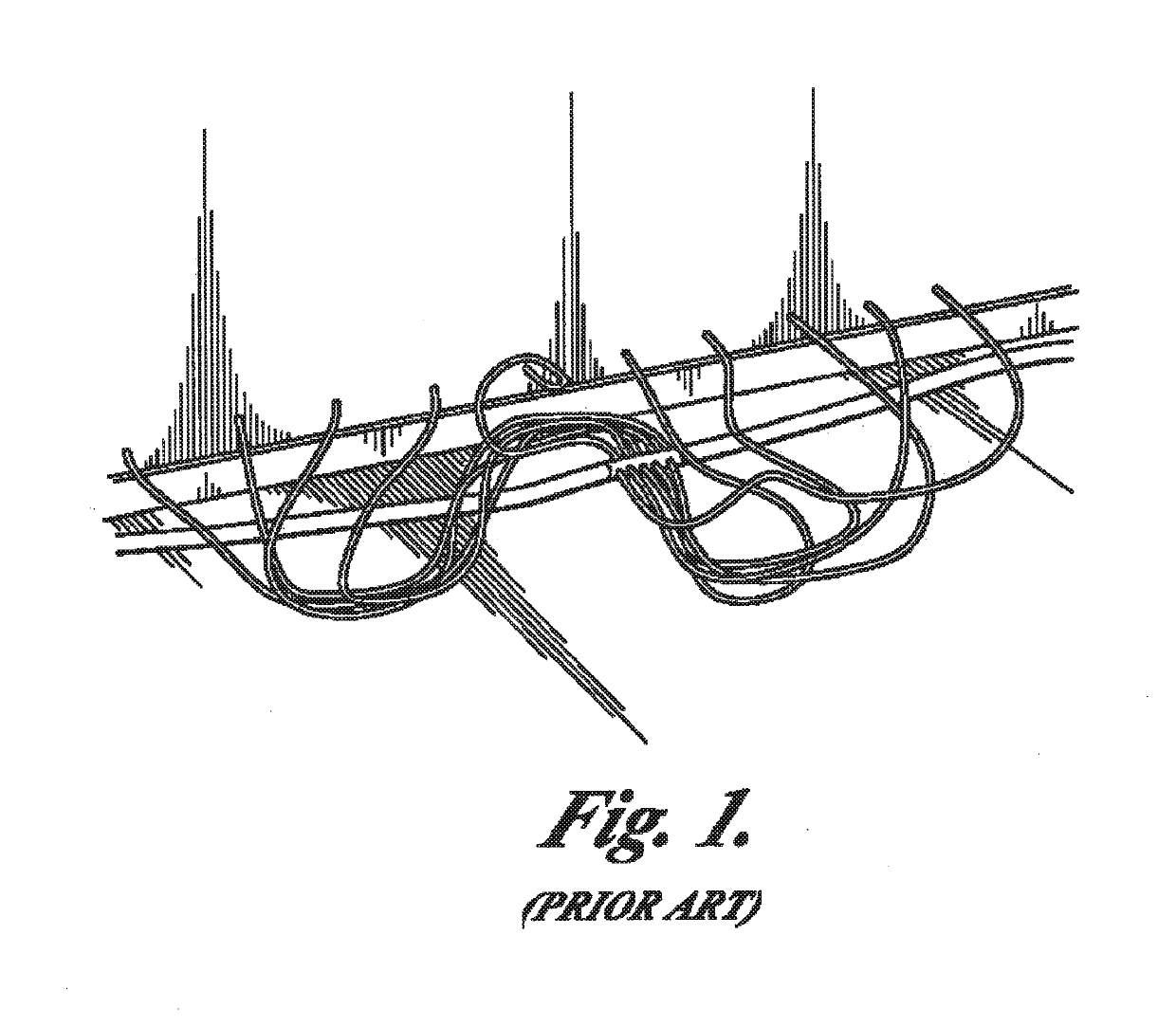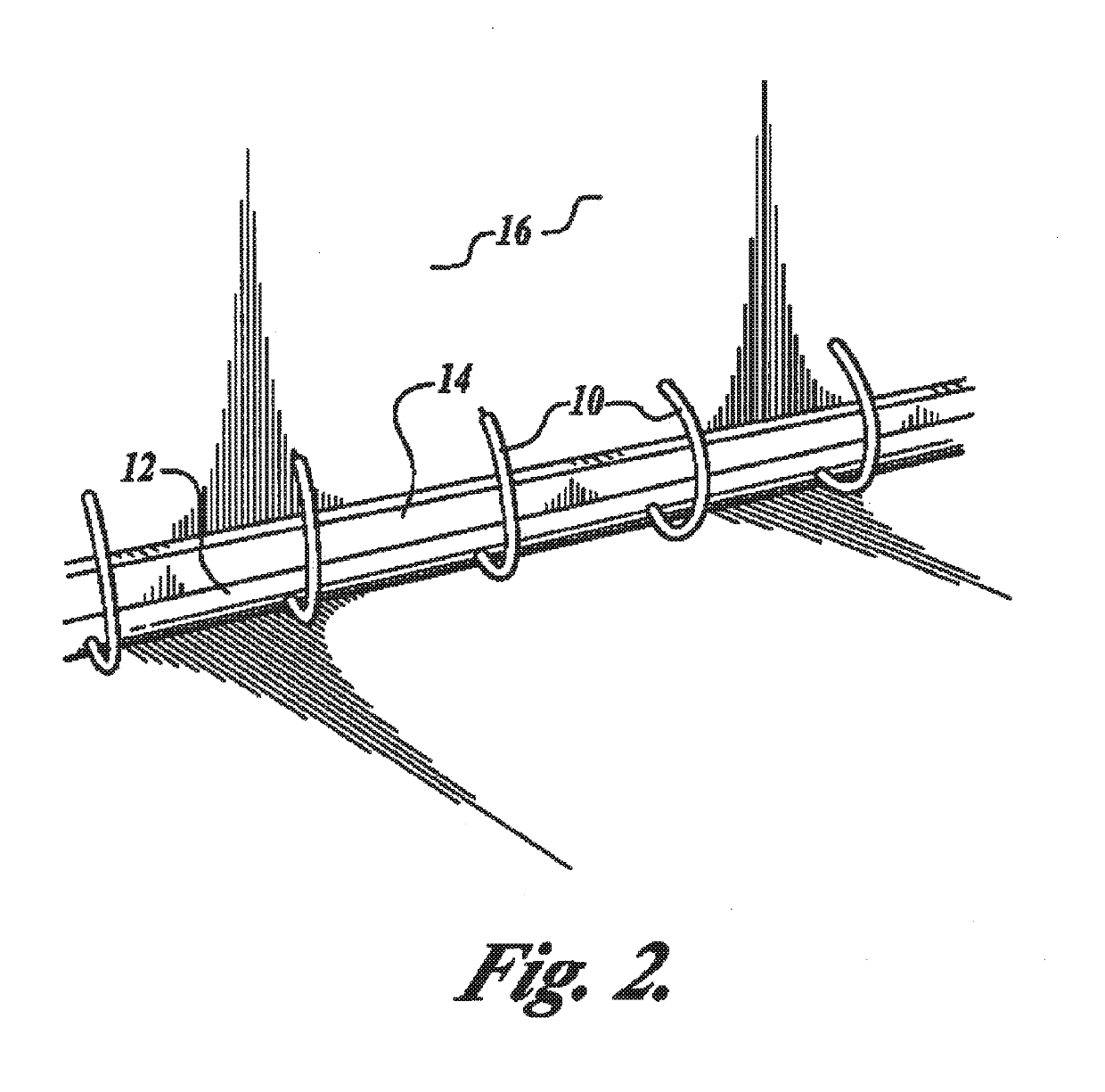Unwanted water introduced by flooding,
precipitation or otherwise causes millions, if not billions, of dollars of damage to structures every year.
In addition, it left the structure relatively unusable for an undesirably long period.
While this resulted in some improvement in many cases, generally, the results were still not satisfactory.
The obvious
disadvantage of such approaches is that they were so destructive as to require significant repair and / or replacement of the structure after the
drying process, resulting in greater cost and often the loss of use of the structure for a longer period than would be the case without the destruction.
While this
system was a significant advance over prior systems, significant problems remained.
(1) Excessively destructive intrusion. Specifically, the prior
system required that a plurality of relatively large sized holes be created in the structure. For example, in a high-density material such as wood, a hole in the approximate range of 3 / 16″ to 7 / 16″
diameter would be required. Holes this large require more effort in repair than would be required with smaller holes. While some prior systems have attempted to utilize smaller holes, the required air injectors were so small that they lacked convenient and effective means for preventing accidental withdrawal without damage to the structure. For example, when an
injector was inserted into a wet sheetrock ceiling, the
injector would have a tendency to fall out, especially in
positive pressure mode. To date, previous attempts to prevent this problem have either not been effective, or have had undesirable side-effects, such as larger holes to accommodate fletching for friction to prevent withdrawal, angled penetration tending to cause damage upon removal, and threads for screwing in the injectors tending to cause a suboptimal amount of labor in the field.
However, the hole in the distal end was too close to the end of the
injector and thereby resulted in frequent clogging with wet
drywall or other debris or matter within the wall or floor cavity.
Because of the small surface area available at the distal end, the extra holes could not be large enough to avoid clogging.
(3) Inefficiency and Expense in Mobilization and Demobilization.
Perhaps the
biggest problem with prior systems was the relatively large amount of labor required to assemble, reconfigure and disassemble them in the field.
Another
disadvantage of my prior
system, and all other
drying systems of which I am aware, is the significant intrusion and interference with the structure being dried.
That is, as a practical matter, while prior systems are being used to dry a structure, it is nearly impossible for the usual occupants of the premises being dried to conduct business therein.
For example, in an office building, the office tenants must generally not return until the job is completed due to the extensive tangle of blowers, hoses and tubes radiating in all directions throughout the afflicted structure.
In most prior systems also, the blowers are too loud to enable work in the structure until the job is completed.
Prior systems moved air inefficiently.
This inefficiency was an inherent feature of the general configuration of my prior system, in that a main
trunk line hose would transmit the air to a manifold, typically in the center of a room or wet area, and the manifold would then disperse the air through tubes all about the room.
Or, conversely, given a maximum amount of pressure sustainable by the blower in the system, the friction in the inefficient distribution of the prior systems would leave that much less effective
air movement for actual drying at the point of the wet surface.
For much the same reason, the prior systems waste a considerable amount of material.
This not only creates more manufacturing cost and labor in the field, but also tends to
clutter the afflicted structure to the point of presenting a hazardous condition for occupants, such as by
increased risk of
tripping.
Special Difficulties with
Hardwood Floors
Each of the foregoing difficulties with prior systems applied to drying any part of any structure in general, whether walls, ceilings, cabinets, or floors, or any cavities therein.
However, particular difficulties are presented with
hardwood floors.
In such cases, with current systems, the owner's alternatives are not good.
However, unless the contractor is careful and accustomed to repairing water-damaged structures, hardwoods are sometimes re-installed over damp subfloors.
In addition, total replacement is generally very costly.
Another
disadvantage is the total time the average home or office is unusable or substantially unusable.
This
delay dramatically increases the total cost of the loss because of additional living expenses or loss of use.
A further disadvantage is that sometimes the wood cannot be matched to the owner's satisfaction.
The first option of blowing air across the surface does almost no good.
Dehumidifying accompanied by tenting seems good on the face but seldom works adequately and often causes the wood to check and crack.
 Login to View More
Login to View More  Login to View More
Login to View More 


